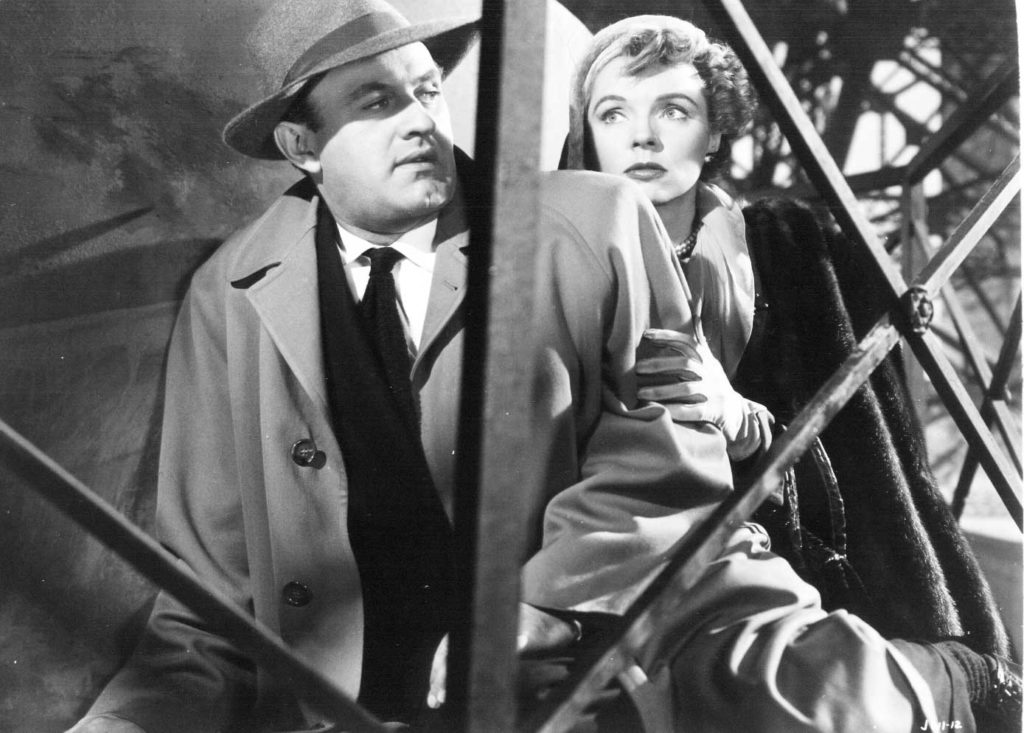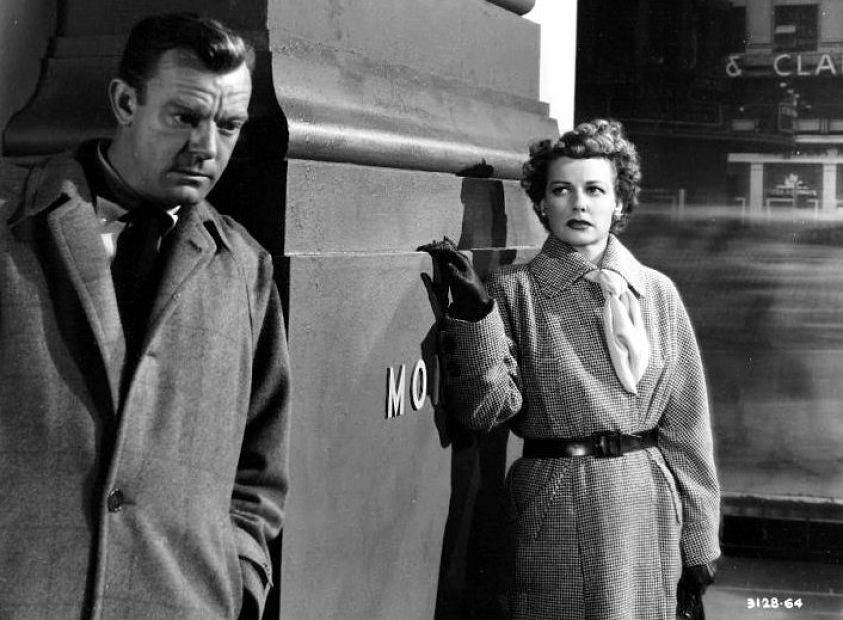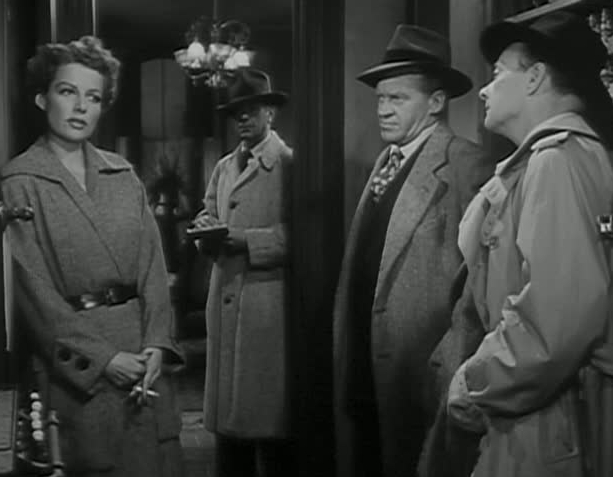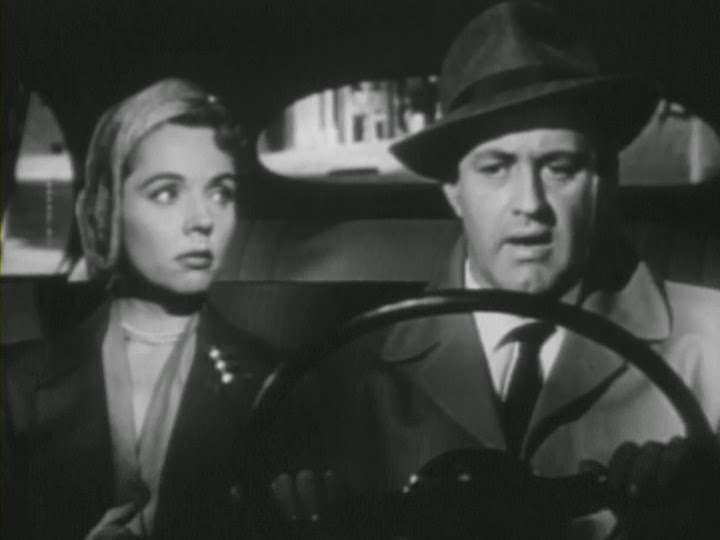
In The Man Who Cheated Himself, which I saw at the Noir City festival earlier this year, a cop falls for a dame who makes him go bad. But it’s not just any cop and not just any dame.
The cop is Ed, a seasoned and cynical pro who knows better. He is played by Lee J. Cobb, whom Czar of Noir Eddie Muller called “the most blustery actor this side of Rod Steiger”. Cobb is known for playing Juror 3, the primary antagonist to Henry Fonda, in 12 Angry Men and the ruthless mob boss Johnny Friendly in On the Waterfront. Ed seems impervious to human emotion and says things like, “You’re a big girl. Cut the tantrums”.
The dame is the much wealthier – and married – socialite Lois (Jane Wyatt). Lois is a puddle of capriciousness and carnality. She has the same fluttery appeal as Mary Astor’s Brigid O’ Shaunessy in The Maltese Falcon.
Wyatt rarely got a chance to play as mercurial a character as Lois. Of course, she’s best known as the mid-century suburban mom/wife in Father Knows Best, rock steady and super square. Before that Wyatt worked in film noir, but not as the femme fatale. She was in Pitfall as the good wife that Dick Powell gets bored with when Lizabeth Scott comes along. In Boomerang! she was the heroic DA’s wife. She played the wife of a murderer who falls for her brother-in-law in House by the River and the sister in a message picture, Gentleman’s Agreement.
But in The Man Who Cheated Himself, Wyatt got to uncork more hysterical unreliability, sexual predation and neediness than in all of her other roles combined. You know when you see a woman and think, She’s trouble? Well, Lois is trouble.
For all of his world-weariness, Ed is really enjoying his affair with Lois. Despite knowing better, he is in deep. As he says, “She’s good for me. She’s no good, but that’s the way it is.”
Lois impulsively shoots her husband, and, in the moment, Ed makes the fateful decision to cover it up.
To complicate matters, Ed’s younger brother Andy (John Dall) has followed his brother on to the police force and just been promoted from walking a beat to detective. This murder is his very first case and he’s really eager to show his big brother proud. It turns out that Andy is smart and has the makings of a first class detective.
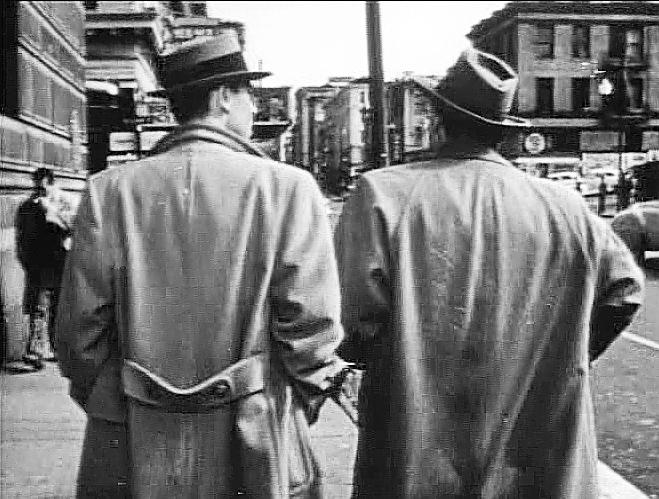
Writers Seton I. Miller and Philip MacDonald cleverly plotted The Man Who Cheated Himself so Ed and Lois get not one, but two, lucky breaks that make it look like they are getting away with it. But then Andy’s young wife and a CHP officer help Andy link the pieces together. Miller and MacDonald have embedded lots of humor in double entendres and absurdly close escapes. One of the funniest bits is an eyewitness, the earnestly unhelpful Mr. Quimby (Charles Arnt).
Are Ed and Lois going to get away with it? Well, this is noir. They find themselves cornered at Fort Point, the windiest spot on the west coast of North America, The notorious wind (actually underplayed in the movie) helps build the suspense.
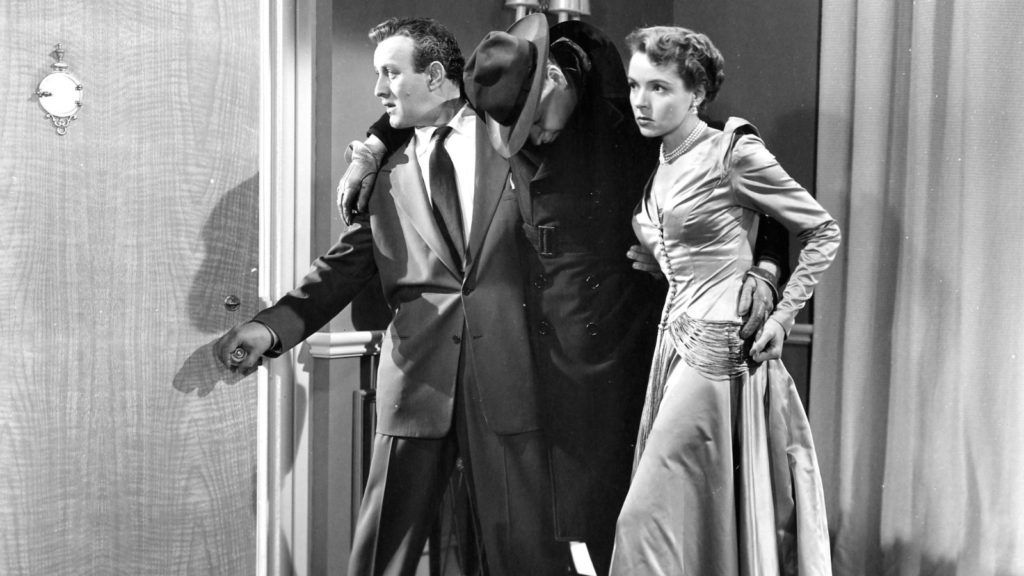
And what an ending! In their final encounter, Lois is going one way – the way that those privileged by wealth and good looks always go. Ed is going in the other direction – the way every noir protagonist goes when he falls for a bad dame. He lights a cigarette and their eyes lock wordlessly; when she leaves, we see in his eyes whether it was all worth it.
The noir in The Man Who Cheated Himself comes from the falling-for-the-wrong-woman theme and the snappy, sarcastic dialogue. There’s no noir camerawork with looming shadows, venetian-blinds-across-the-face and cigarette smoke dancing to the ceiling here.
But there are plenty of glorious mid-century San Francisco locations – hills, mansions of the nobs, grittier streets and the waterfront (back when it was a sketchy working port). It’s the San Francisco that I remember as a child in the 1950s, with women wearing gloves during the day and human-tended toll booths at the Golden Gate Bridge (when the toll was collected northbound, too!).
And, odd for a San Francisco-set noir, it is definitely not fog-shrouded. The day I saw The Man Who Cheated Himself was one of those gorgeous sunny days that San Francisco gets in the winter – and that’s what the movie looks like.
The Man Who Cheated Himself’s director was the otherwise undistinguished journeyman Felix Feist. Feist made a handful of other noirs, including The Threat with Charles McGraw as a vengeful hood, Tomorrow is Another Day with an irresistible Ruth Roman and The Devil Thumbs a Ride with Lawrence Tierney. Then Feist left the movies to direct over seventy episodes of TV shows.
The raison d‘être of the Noir City film festivals is to raise money for the Film Noir Foundation’s restoration of classic film noir. The FNF just restored The Man Who Cheated Himself so it could be seen again in a theater for the first time in decades. It’s not yet available to stream, but Turner Classic Movies will air it on Muller’s Noir Alley series on June 23 and 24.
